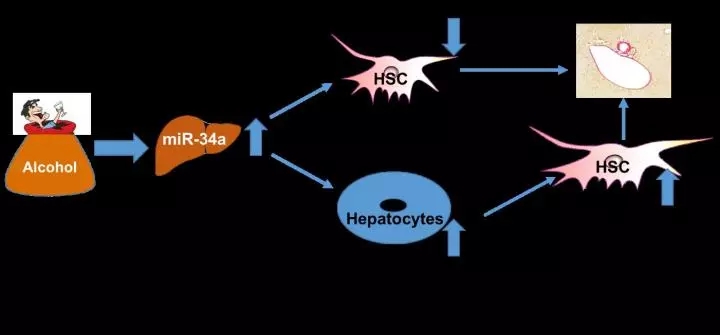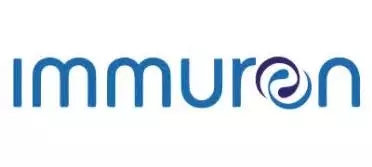Summary of research progress in the field of liver diseases
November 17, 2017 Source: WuXi PharmaTech
Window._bd_share_config={ "common":{ "bdSnsKey":{ },"bdText":"","bdMini":"2","bdMiniList":false,"bdPic":"","bdStyle":" 0","bdSize":"16"},"share":{ }};with(document)0[(getElementsByTagName('head')[0]||body).appendChild(createElement('script')) .src='http://bdimg.share.baidu.com/static/api/js/share.js?v=89860593.js?cdnversion='+~(-new Date()/36e5)];1. The first hepatitis B vaccine HEPLISAV-B was approved for marketing in 25 years
Recently, Dynavax announced that the US FDA approved its hepatitis B vaccine HEPLISAV-B to prevent adult infections in adults over 18 years old caused by all known hepatitis B virus subtypes. HEPLISAV-B is the first new hepatitis B vaccine in the United States in 25 years and the only dual-dose hepatitis B vaccine for adults. It is expected to be available in the US in the first quarter of 2018.

Hepatitis B is a highly contagious and potentially lethal virus that has a great influence worldwide. About 400 million people worldwide suffer from chronic hepatitis B. More than 780,000 people die each year from hepatitis B. Symptoms, including cirrhosis and liver cancer. There is no cure for hepatitis B, and infections are increasing, but they can be prevented by vaccination. The current hepatitis B vaccine needs to be injected three times in six months, but nearly half of the adults fail to complete the full vaccine within one year. If there is a more convenient vaccine, it will greatly improve the effective vaccination rate of hepatitis B vaccine. HEPLISAV-B is an adult hepatitis B vaccine that combines hepatitis B surface antigen with Dynavax's proprietary Toll-like receptor (TLR) 9 agonist to enhance the immune response. It only needs to be injected twice in a month, and the hepatitis B vaccination is completed in a shorter time with fewer injections.

The approval of HEPLISAV-B is based on data from three Phase 3 non-inferiority trials. These trials involved nearly 10,000 adult participants who were vaccinated with HEPLISAV-B to compare the effects of inoculation of HEPLISAV-B twice within one month and Engelix-B three times within six months. The results from the largest trial involving 6,665 participants showed that the protection rate of HEPLISAV-B was 95%, which was significantly higher than 81% of Engerix-B. In a subgroup analysis of 961 patients with type 2 diabetes, the protection rate of HEPLISAV-B reached 90%, significantly higher than 65% of Engerix-B.
“HEPLISAV-B is Dynavax's first FDA-approved product, demonstrating our ability to develop innovative products and move them from discovery to commercialization,†said Dynavax CEO Eddie Gray. “We are grateful for R&D. HEPLISAV-B has contributed many research participants and clinical trial researchers. We expect this to be an important tool for the prevention of hepatitis B in the public health field, and we look forward to the use of HEPLISAV-B by clinicians and their adult patients."
2. The researchers found a relationship between cellular senescence and liver fibrosis
According to the National Institute of Alcohol Abuse and Alcoholism, in 2015, nearly half of the 80,000 people who died of liver disease in the United States were associated with alcoholic liver disease (ALD). Long-term drinking leads to abnormal accumulation of fat in the liver cells (steatosis) and liver fibrosis, which may lead to hepatitis, cirrhosis and even liver cancer. Recently, a new study published in The American Journal of Pathology provides new insights into cellular aging, explores the mechanisms by which it causes excessive liver fibrosis, and the means by which these changes can be suppressed. The paper has the potential for ALD. The patient brings new treatment.
"We believe that in chronic liver injury, cell aging is associated with age-related tissue degradation," said Fanyin Meng, MD, associate professor of internal medicine at Texas A&M College of Medicine in Texas, USA. Is an irreversible cell cycle arrest, coupled with the secretion of pro-inflammatory cytokines and disorders of hepatocyte function. Our research shows that the driving factor of cell aging is also a key mediator of ALD."

â–² Upregulation of MIR-34A promotes liver fibrosis during alcoholic liver disease by increasing hepatocyte senescence and reducing senescence of hepatic stellate cells (HSC) (Source: Ying Wan / Reference [2])
The researchers examined the liver tissue of patients with steatohepatitis from heavy drinking and the liver tissue of mice fed with ethanol to determine biomarkers of cellular senescence. The results indicate that up-regulation of microRNA-34a (miR-34a) promotes the development of liver fibrosis during alcoholic liver injury when drinking alcohol. The profibrotic effect of MiR-34a is associated with aging signaling in two different types of hepatocytes: in primary liver cells that account for 70-85% of liver mass, performing basic liver functions, cellular senescence is increased; In cell-like cells (HSC), cell senescence is reduced when activated by alcohol or other liver damage, allowing cells to begin to produce excess fibrotic material. Their study also showed that inhibition of liver miR-34a expression can reduce liver damage and liver fibrosis in ALD.
This study identified a regulatory pathway for HSC activation that has potential for use in other liver fibrosis diseases associated with cellular aging. The co-author of the paper, Dr. Gianfranco Alpini, commented: "The drivers of targeted aging and cellular aging have the potential to become new treatments to reduce hepatic steatosis and liver fibrosis in patients with ALD."
3. Immuron's NASH Bio-antibody Drug Phase 2 Clinical Trial Completes Key Milestones
Australia's Immuron has announced that it has completed Phase 2 clinical trials of the IMM-124E for NASH, which is expected to be completed in the first quarter of 2018.

Nonalcoholic steatohepatitis (NASH) is a common liver disease unrelated to alcohol, characterized by accumulation of fat in the liver and inflammation and fibrosis. The number of NASH cases worldwide continues to rise. In China, the prevalence of NASH in some areas can be as high as 27%; in the United States, the number of NASH patients is as high as 16 million. NASH may induce severe liver problems and even liver cancer without effective treatment.
Fatty liver disease is usually caused by a liver inflammatory response caused by high body weight, obesity, heredity and diet. Immuron tried to solve this situation through innovation, one of which is to use specific antibodies to regulate intestinal bacteria. IMM-124E is a naturally occurring polyclonal antibody biologic designed to prevent and treat liver inflammation and fibrosis in NASH. It has a dual mechanism of action that promotes the regulation of T cells to suppress inflammation in diseased areas without inducing extensive immunosuppression and without negatively affecting the basic microflora population. Its safety also allows for combination with other treatments.
Immuron's NASH clinical study included 133 patients with NASH confirmed by biopsy. The last patient in the trial underwent a final regular consultation on October 9 after a 28-week study period. On October 18th, the last field visit (COV) was conducted at the same study site, effectively ending all Phase 2 clinical trials of IMM-124E.
Immuron published an interim analysis of 122 patients in July 2017, when 80 patients completed 24 weeks of IMM-124E treatment. In the interim report, IMM-124E showed good safety compared to placebo. In addition, the Data and Safety Monitoring Committee (DSMB) reported that both treatment doses of IMM-124 showed a statistically significant decrease in ALT, the most common enzyme in the liver, when compared to the placebo group. The same effect is also seen in another enzyme, AST, in the liver, and the correlation between the two enzymes is reported. These results indicate a reduction in liver damage (necrotic inflammation) in patients treated with IMM-124E compared to placebo.
Immuron said that once all data has been reviewed by the company and the Scientific Advisory Board, the company will report its top-line clinical trial results in the first quarter of 2018. “Completing the clinical trials of these patients marks a key milestone for Immuron, and we are now looking forward to analyzing and reporting the data,†said Dr. Jerry Kanellos, CEO of Immuron, “The NASH drug known as “to Charge NASH†Development tasks mean huge market demand and high growth potential. We hope to continue to advance the later stages of clinical trials, ultimately bringing changes to NASH patients and the medical community."
Reference material
[1] How Sweet It Is: Dynavax Finally Wins FDA OK for Hep B Vaccine Heplisav
[2] New study may target to lessen the effects of alcoholic liver disease
[3] Immuron Successfully Completes NASH Phase II Clinical Study Milestone
(Original title: Inventory | Summary of research progress in the field of liver diseases (27th issue))
Polypropylene is a thermoplastic polymer used in a wide range of applications among which we usually use it to make pharmaceutical packaging products. Each time when we receive the original Polypropylene materials we have ordered, we will do a series of modifications on them to form some useful pellets that will used in our products. One kind of these reproduced particles will be used to make caps for pharmaceutical ampoule bottles. We now have a big stable customer base in our domestic market. In future, we will do our best to serve the worldwide clients. If you are looking for a cooperator in our country, maybe we are a good choice for you. Warmly wait for your inquires!
Pp Resin For Plastic Ampoule,Resin For Bottle,Modified Polypropylene Granules,Medical Ampoule Bottle
Suzhou CRH New Material Technology Co.,Ltd. , https://www.crh-health.com